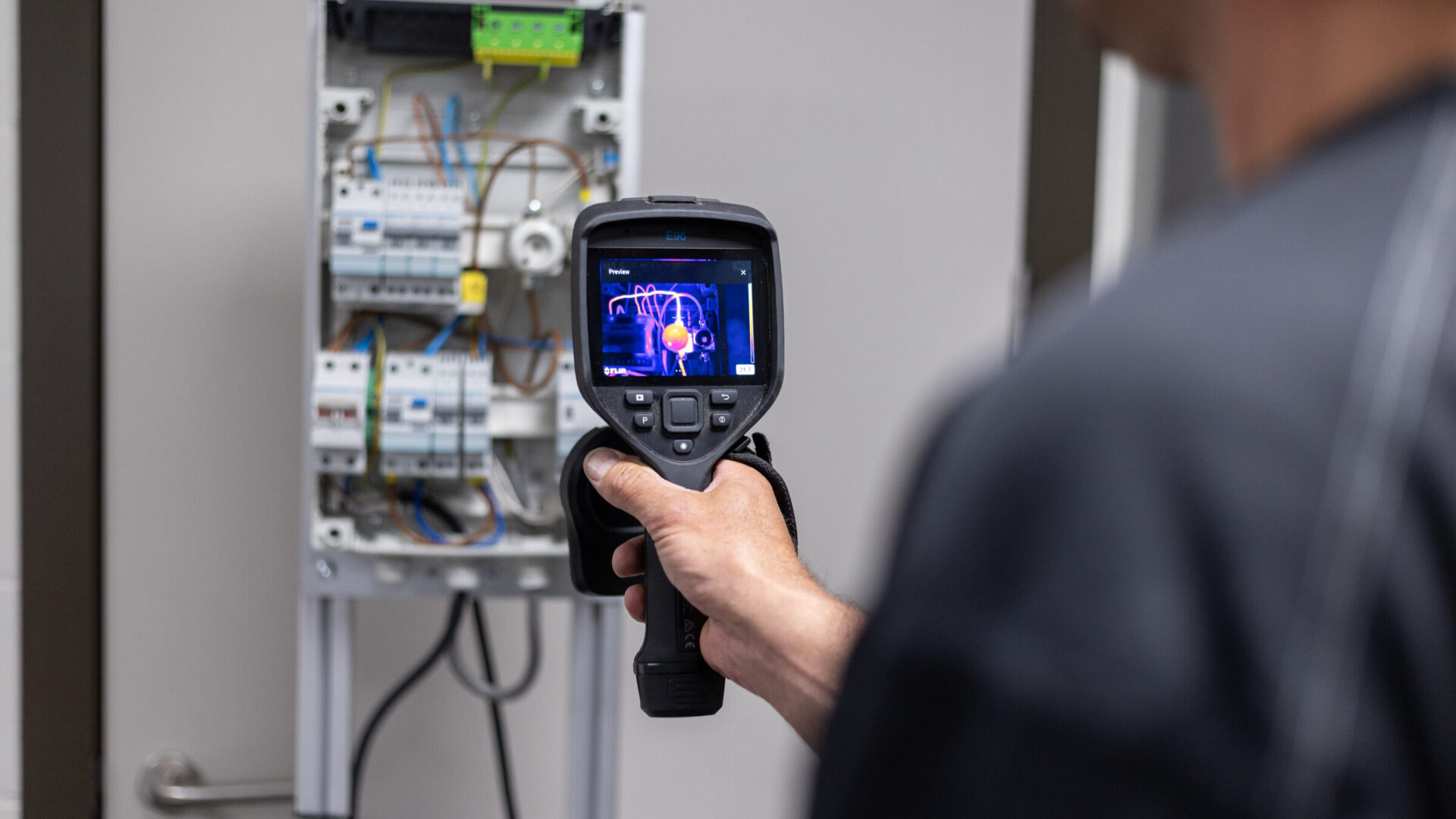What is thermography?
Thermography is a non-destructive examination method. It uses the physical fact that every object emits infrared radiation. The wavelength depends on the height of the object temperature.
How does a Thermography inspection work?
Using the Infrared camera, the measured electromagnetic radiation is converted into an electrical signal which is presented on the camera screen in the form of a so-called thermogram.
The temperature measured by the IR camera largely depends on the emission factor of the materials being measured. The emission factor is the ratio between the actual temperature of an object and the temperature as measured by the infrared detector. If the emission factor is low, a lower temperature is measured than the actual temperature. It is therefore important to know and apply the correct emission factor of the materials before measuring absolute temperatures. However, determining the emissivity is not always possible or necessary.
Thermography research usually does not focus on measuring absolute temperatures, but on recording relative temperatures. Because in the case of (future) defects, the measured temperature is often not too high but rather anomalous. Relative temperatures therefore provide much more information about hidden defects and faults than actual temperatures. This is because the temperatures are compared with those of corresponding situations such as:
- Evenly loaded three-phase connections and components
- Power rail joints with multiple bolts and nuts
- Bearings of rotating equipment
- Level measurements in tanks
- Level measurements of sludge in tanks
- Sealing of pipes
- Defects in insulating material

